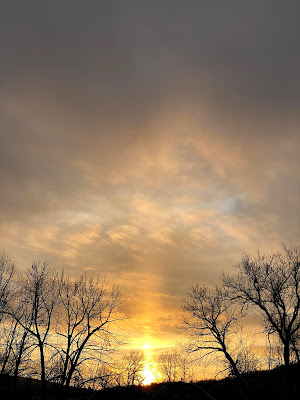On the Other Side of That
The painting tonight is waiting.
"Each afternoon I watched her coming back
through the hot stony field after swimming,
the sea light behind her and the huge sky
on the other side of that."
-Jack Gilbert
Layers need to dry, I need to sleep.
Decisions need to be made about its completeness or if there is more hidden behind, between, and on the other side of the layers.
One thought I have is gold leaf. Another is of Icarus flying—a solitary silhouette revealing itself as it falls to the earth. Or the scratched through poem. Originally the painting was to hold:
- a bird's nest,
- a cage and
- the wing embracing and flying from them.
I hear in my head my old painting mentor, Fred Meyer, pushing me on to leave behind conventionality and sentimentality instead to uncover and to perfect the line, the thought, the inner-outer space. Now gone, does he appreciate the paint quality? Would he question me on the wingness of the wing? Does he even see this world from death? Would he refute the old questions and their answers? Instead I look to other masters. The wonder of art is that a body remains after all else have gone.
As the work has progressed only a single wing takes flight carrying with it my intent. The sky and flow of energy have become the focus. But they are borne of "unintent". Minutely on the bottom a row of figures marks the horizon, pure logic there or perhaps mere decoration?
Art has been said to be intent.
But that holds no truth. Art is the joining of brain to mind; left to right; logic to irrationality; visual to theoretical. All—the cortex, cerebellum, hypothalamus, thalamus, hippocampus, and basel ganglia—jointly, deftly command the brush.
"Neuroanatomists usually consider the brain to consist of six main regions: the telencephalon (cerebral hemispheres), diencephalon (thalamus and hypothalamus), mesencephalon (midbrain), cerebellum, pons, and medulla oblongata.[27] Each of these areas in turn has a complex internal structure. Some areas, such as the cortex and cerebellum, consist of layers, folded or convoluted to fit within the available space. Other areas consist of clusters of many small nuclei. If fine distinctions are made on the basis of neural structure, chemistry, and connectivity, thousands of distinguishable areas can be identified within the vertebrate brain."—http://en.wikipedia.org/wiki/Brain
Words have been scratched and painted in, then covered or removed—like the lost heart and Spring's burst of green—buried and then consumed in an impossible flight.
So as the painting sleeps tonight (will I peak in on it like a mother on her sleeping child and if I do will I then be tempted to unsettle and perhaps unwittingly destroy it?), I discuss with my daughter Tegan the nature of intent and of intentions gone astray.



Intent. OK. We can work with that. Then found art is the intent to discover? And accidental art is the intent to be inspired, to see more than can be seen to unenlightened eyes?
ReplyDeleteDAG
Hmm, perhaps the act of creating art is the intent to discover? And the intent of the viewer is to be inspired?
ReplyDeleteAny work of art, once no longer under the artist's control, now belongs to the viewer to create what they will, much like I have with Jack Gilbert's poem, or since this painting is instead really nine paintings may be rearranged how the eventual owner so wishes? Or in fact I and we have by posting this to the net and allowing all to comment!
David - good to hear from you and I love your last article on Chaos in Computer!